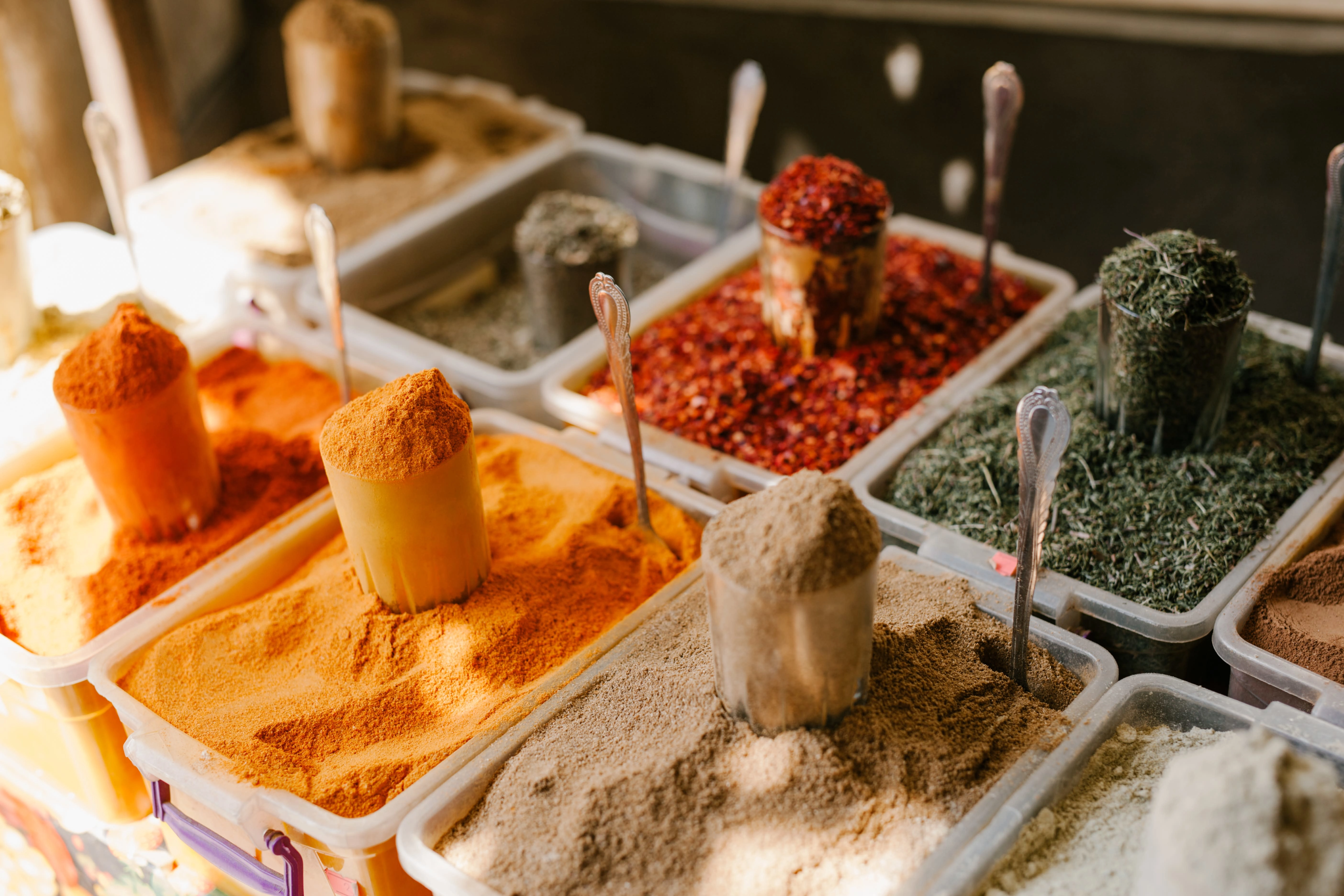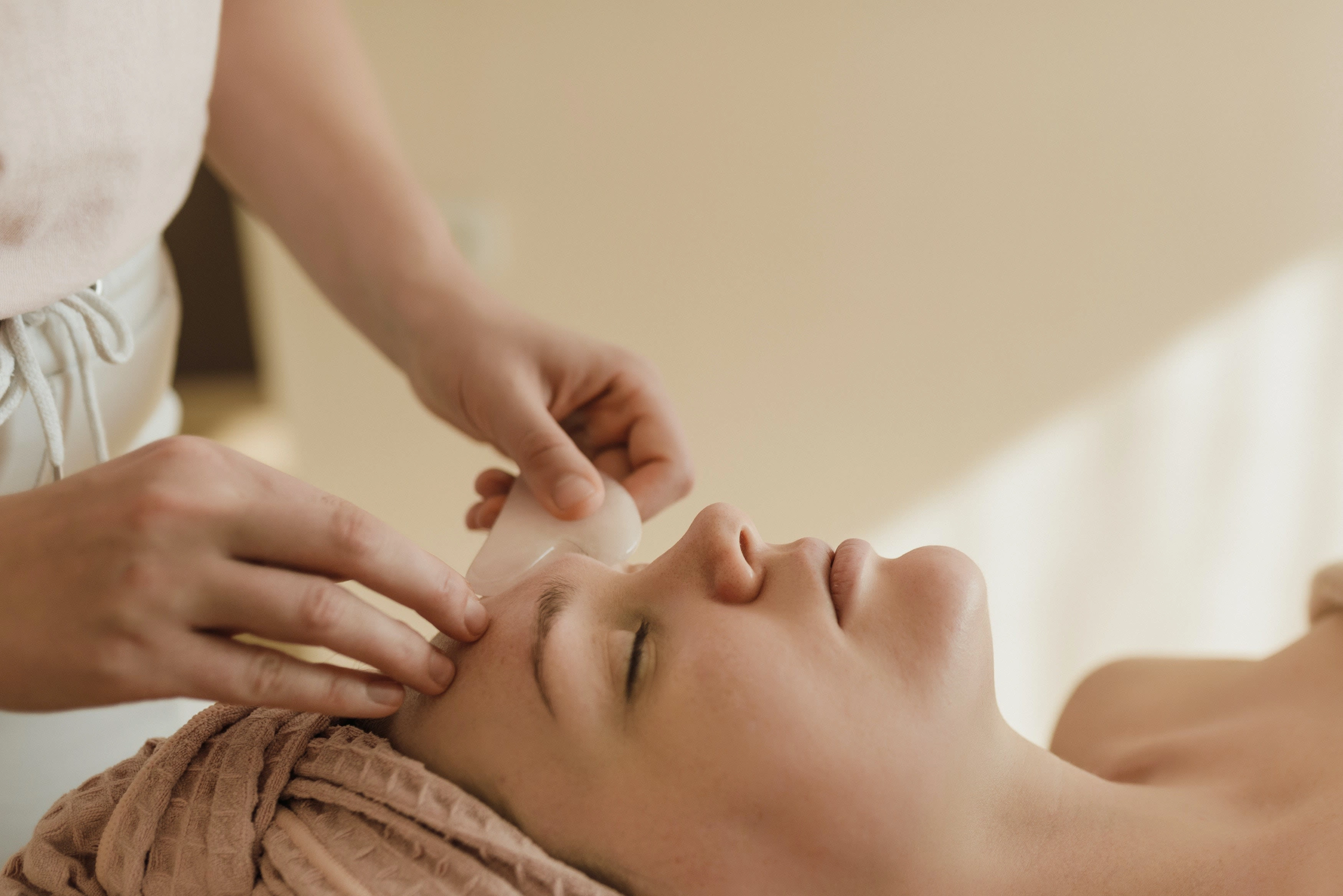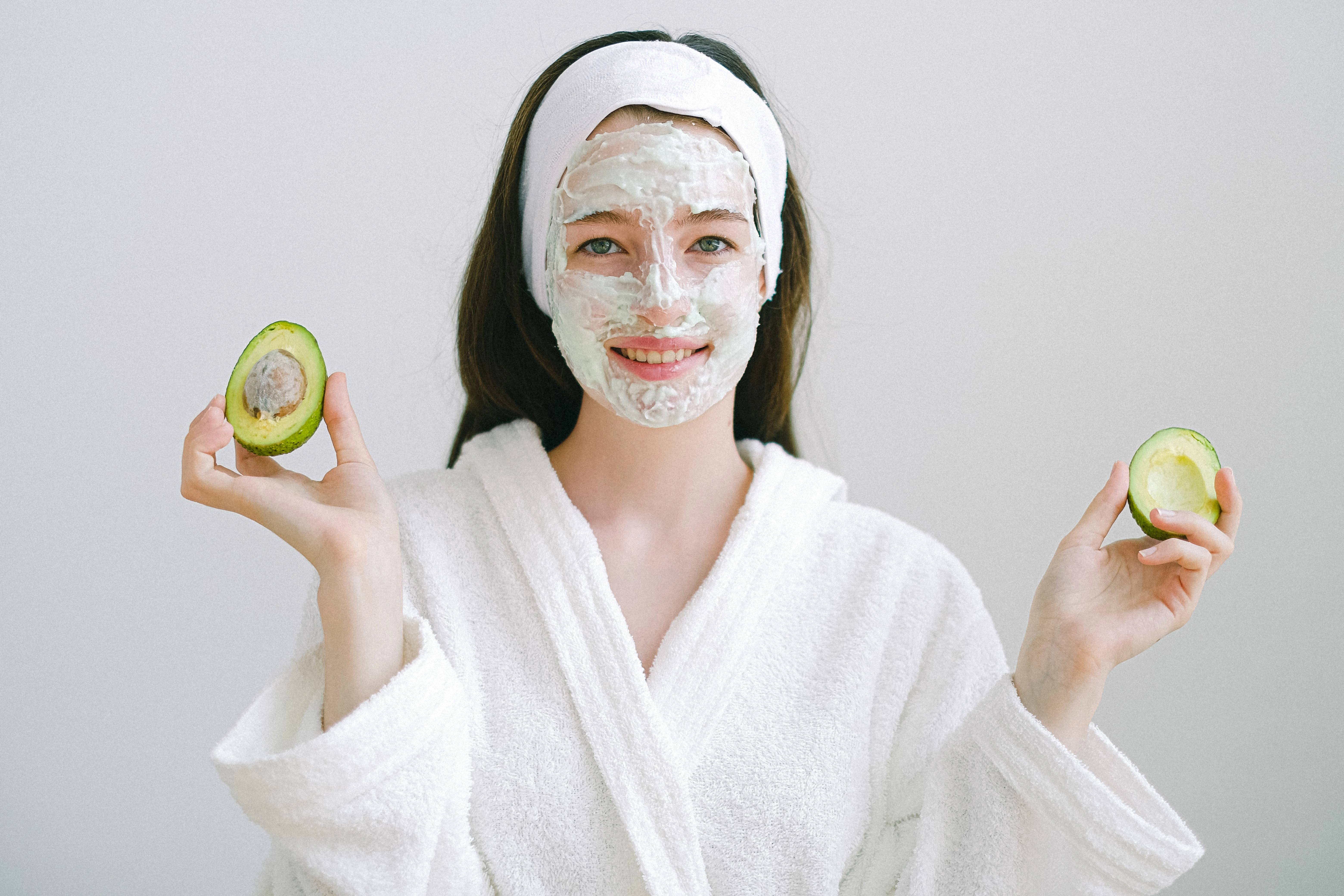Ayurvedic Nutrition for Balancing Doshas & Enhancing Skin Health
Ayurvedic nutrition is a holistic approach to nourishing the body and mind, rooted in the ancient wisdom of Ayurveda. This ancient Indian system recognizes that each individual has a unique constitution, known as their dosha, which influences their physical, mental, and emotional characteristics. The three primary doshas, Vata, Pitta, and Kapha, determine an individual's physiological and psychological traits. Ayurvedic nutrition aims to balance the doshas through the proper selection of foods, herbs, and lifestyle practices, offering a comprehensive approach to overall well-being. In this article, we will delve into the world of Ayurvedic nutrition, exploring the principles of dosha balance and how it can enhance skin health. We will also discuss specific foods, cooking techniques, and lifestyle tips that promote optimal dosha balance and radiant skin.

1. Introduction to Ayurvedic Nutrition and Doshas
What is Ayurvedic Nutrition?
Ayurvedic nutrition is a holistic approach to eating that aims to balance the mind, body, and spirit. It is based on the ancient Indian system of medicine known as Ayurveda, which emphasizes the importance of maintaining balance and harmony within the body to achieve optimal health.
In Ayurvedic nutrition, food is not just seen as fuel for the body, but as a source of healing and nourishment. It takes into consideration factors such as taste, seasonality, and individual constitution to create a well-rounded diet that supports overall well-being.
Understanding the Concept of Doshas
Central to Ayurvedic nutrition is the concept of doshas, which are the three primary energies or forces that govern our physical and mental characteristics. The doshas are known as Vata, Pitta, and Kapha.
Each person has a unique combination of these doshas, which influences their physical and emotional traits. Understanding your dominant dosha can help you tailor your diet and lifestyle choices to maintain balance and prevent imbalances that can lead to health issues.
2. Understanding the Three Doshas: Vata, Pitta, and Kapha
Characteristics and Attributes of Vata Dosha
Vata is associated with the elements of air and space. People with a dominant Vata dosha tend to be creative, energetic, and quick-thinking. However, they may also experience imbalances such as dry skin, anxiety, and digestive issues when out of balance.
Characteristics and Attributes of Pitta Dosha
Pitta is associated with the elements of fire and water. Individuals with a dominant Pitta dosha are often driven, focused, and have a strong metabolism. However, imbalances in Pitta can manifest as skin inflammation, digestive problems, and irritability.
Characteristics and Attributes of Kapha Dosha
Kapha is associated with the elements of earth and water. People with a dominant Kapha dosha tend to be calm, grounded, and have a strong physical build. However, when Kapha is imbalanced, it can lead to weight gain, lethargy, and congestion.

3. Ayurvedic Principles for Balancing Doshas through Nutrition
The Importance of Dosha Balance for Overall Health
Maintaining balance among the doshas is vital for overall health and well-being. When the doshas are in harmony, it promotes optimal digestion, assimilation of nutrients, and efficient elimination. It also helps in preventing various health issues.
Ayurvedic Approach to Balancing Doshas through Nutrition
According to Ayurveda, balancing the doshas involves eating foods that have opposite qualities to the dominant dosha. For example, for balancing Vata, warm, cooked, and moist foods are recommended. Pitta can benefit from cooling and hydrating foods, while Kapha can benefit from light, warming, and stimulating foods.
Ayurvedic nutrition also emphasizes the importance of mindful eating, including eating in a calm environment, chewing food thoroughly, and honoring your body's hunger and fullness cues. Additionally, incorporating Ayurvedic herbs, spices, and teas into your diet can further support dosha balance.
4. Enhancing Skin Health with Ayurvedic Nutrition
The Connection Between Doshas and Skin Health
In Ayurveda, the skin is considered a reflection of overall health, and imbalances in the doshas can manifest as skin issues. For example, Vata imbalances can lead to dryness and roughness, Pitta imbalances can cause redness and inflammation, and Kapha imbalances can lead to oiliness and congestion.
Ayurvedic Principles for Promoting Healthy Skin
To enhance skin health, Ayurvedic nutrition suggests following a diet that supports dosha balance and includes skin-nourishing foods. For Vata skin, incorporating foods like avocados, ghee, and warm spices can help. Pitta skin benefits from cooling foods like cucumber, coconut water, and leafy greens. Kapha skin can be supported by consuming light, cleansing foods like bitter greens, turmeric, and ginger.
In addition to dietary adjustments, Ayurvedic skincare practices such as oil massages (abhyanga), dry brushing, and using herbal face masks can further promote healthy, glowing skin.
Remember, while Ayurvedic nutrition can provide valuable insights into balancing doshas and enhancing skin health, it's always best to consult with a qualified Ayurvedic practitioner or nutritionist for personalized guidance based on your unique constitution. And don't forget, enjoying your food with a pinch of joy and a dash of gratitude is an essential ingredient in any diet!

5. Ayurvedic Foods and Herbs for Promoting Healthy Skin
When it comes to healthy skin, Ayurveda emphasizes the importance of nourishing your body from the inside out. Incorporating specific foods and herbs into your diet can help balance your doshas and enhance your skin health.
Foods Beneficial for Vata-Prominent Skin
If you have Vata-predominant skin, which tends to be dry and prone to wrinkles, focus on incorporating warm and grounding foods into your diet. Opt for nourishing foods like cooked grains, root vegetables, ghee (clarified butter), and healthy fats like avocados and nuts. Herbs such as ashwagandha and turmeric can also be beneficial for Vata skin, as they have anti-inflammatory properties.
Foods Beneficial for Pitta-Prominent Skin
For those with Pitta-predominant skin, which is sensitive and prone to redness and inflammation, aim for cooling and soothing foods. Include plenty of fresh, juicy fruits like melons, cucumbers, and berries. Coconut oil, cilantro, and aloe vera are also great additions to your diet, as they help cool and hydrate the skin. Avoid spicy and fried foods, as they can aggravate Pitta.
Foods Beneficial for Kapha-Prominent Skin
If you have Kapha-predominant skin, which is oily and prone to congestion and acne, focus on incorporating foods that are light and warming. Include plenty of leafy greens, cruciferous vegetables, spicy herbs like ginger and cinnamon, and lean proteins. Avoid heavy and greasy foods, as they can further aggravate Kapha.
6. Ayurvedic Cooking and Eating Practices for Dosha Balance and Skin Health
In addition to incorporating specific foods, Ayurveda also emphasizes the importance of cooking and eating practices to balance your doshas and improve your skin health.
Cooking Techniques to Balance Doshas
To balance your doshas through cooking, opt for methods such as steaming, boiling, and gentle sautéing. Avoid deep-frying and excessive use of oil. Adding warming spices like cumin, coriander, and fennel to your dishes can also aid digestion and balance your doshas.
Eating Practices for Optimal Digestion and Nutrient Absorption
Ayurveda stresses the importance of mindful eating for optimal digestion. Chew your food thoroughly and eat in a calm and relaxed environment. Avoid multitasking or eating on the go, as this can hinder proper digestion. Additionally, try to eat your main meal when the sun is at its peak, as this is when your digestion is strongest.

7. Lifestyle Tips for Supporting Ayurvedic Nutrition and Skin Health
In addition to Ayurvedic nutrition, certain lifestyle practices can further support your dosha balance and skin health.
Daily Routines and Self-Care Practices
Establishing a daily routine, or "dinacharya," can help bring balance to your doshas. This includes practices such as waking up early, practicing self-care activities like oil massage (abhyanga), and getting enough restful sleep. Avoid excessive stress and make time for activities that nourish your mind and soul.
Exercise and Movement for Dosha Balance
Engaging in regular exercise and movement is crucial for maintaining dosha balance. Choose activities that align with your dosha. Vata types may benefit from gentle exercises like yoga and walking, while Pitta types may enjoy more moderate activities like swimming or cycling. Kapha types can benefit from more vigorous exercises like running or high-intensity workouts.
8. Conclusion: Embracing Ayurvedic Nutrition for Balanced Doshas and Radiant Skin
By incorporating Ayurvedic nutrition principles, cooking techniques, and lifestyle practices into your daily routine, you can achieve a harmonious balance of your doshas and enhance your skin health. Remember, it's not just about what you put on your skin, but what you put into your body that truly makes a difference. So, embrace Ayurvedic wisdom and nourish yourself from within for radiant and healthy skin.

Incorporating Ayurvedic nutrition into your lifestyle can have profound effects on your overall well-being and skin health. By understanding your unique dosha and making mindful choices in your diet, you can achieve a harmonious balance of mind, body, and spirit. Ayurvedic principles guide us towards nourishing foods, herbs, and practices that support dosha balance and promote radiant skin. So, embrace the wisdom of Ayurveda, explore the world of Ayurvedic nutrition, and experience the transformative power it holds in enhancing your dosha balance and skin health. Your journey towards optimal well-being starts with the choices you make every day.

Like this project
Posted Sep 9, 2023
Lets delve into the world of Ayurvedic nutrition, exploring the principles of dosha balance and how it can enhance skin health.
Likes
0
Views
3





